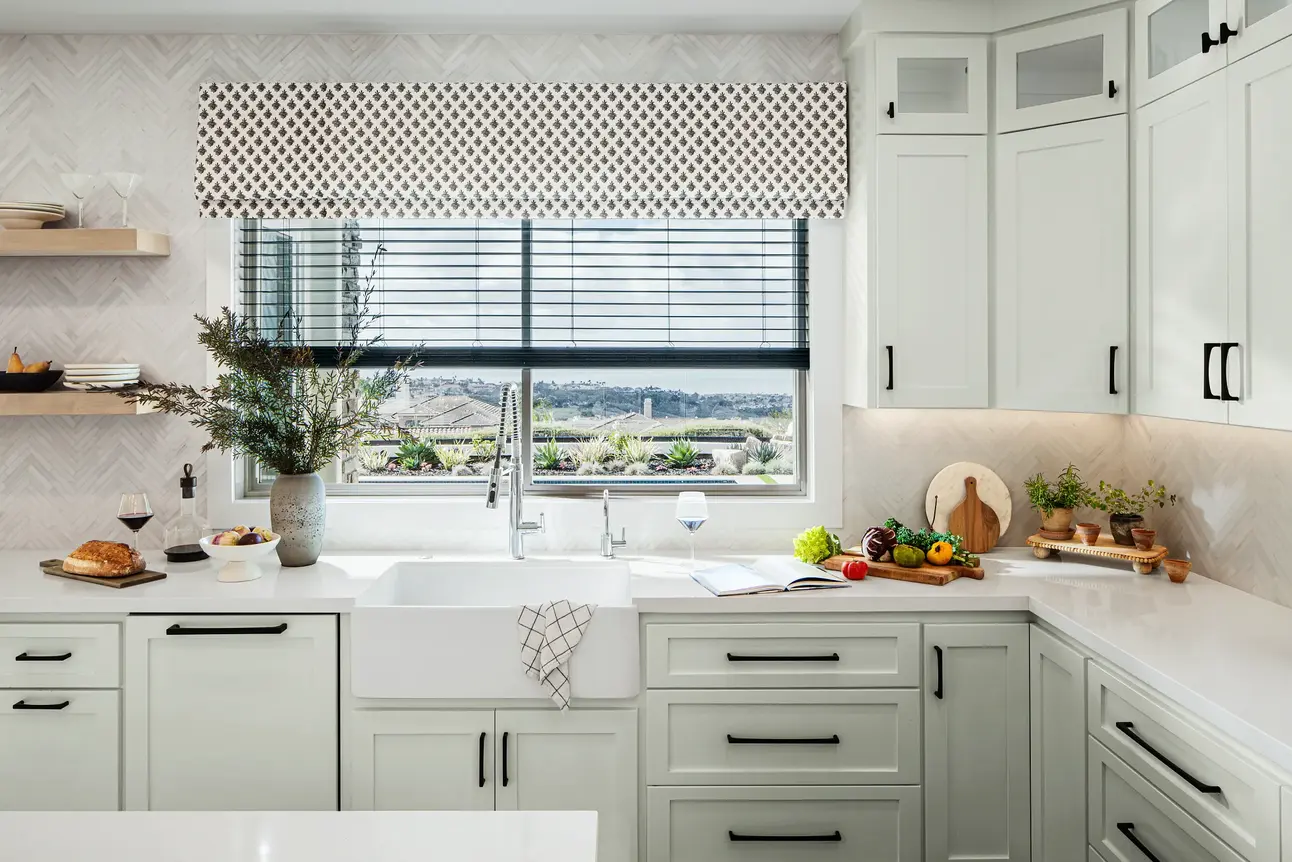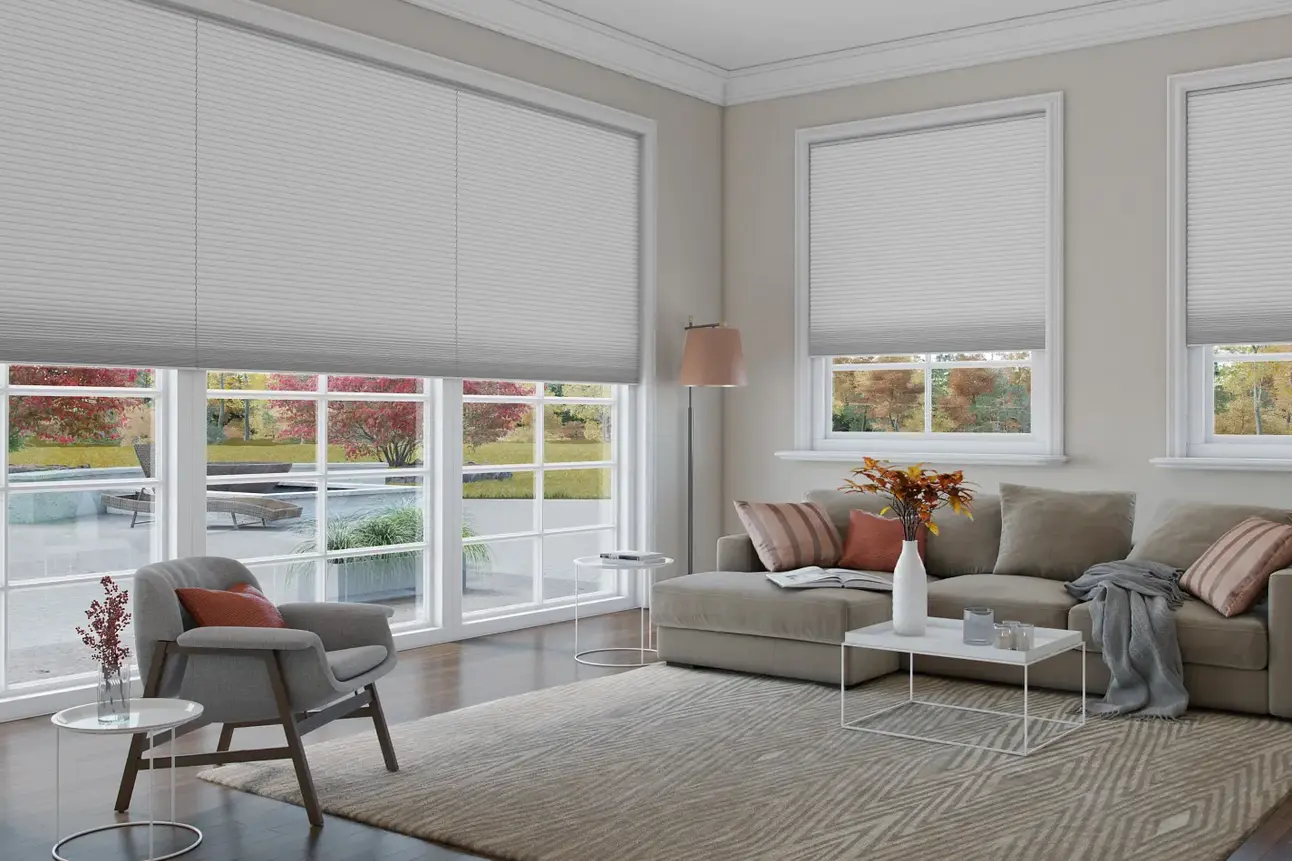Discover how blinds and shades differ in light control, privacy, energy efficiency, and style, and how to choose the best fit for your renovation.
Choosing the right window treatments can feel overwhelming, especially when you want your home renovation to reflect your style and meet your needs for privacy, light control, and comfort. If you’re torn between blinds and shades, you’re not alone. Many homeowners debate the benefits of window blinds vs shades when updating their space. By understanding the key differences, pros and cons, and expert guidance available, you’ll feel confident in selecting the perfect solution for your home.
Blinds vs Shades: Understanding the Key Differences
What are the main differences when comparing blinds vs shades for your windows? Blinds are made from hard materials such as wood, faux wood, vinyl, or aluminum, with adjustable slats that tilt to control light and privacy. In contrast, shades are made from soft fabrics like woven, cellular, or roller materials that raise and lower in a single motion for a smooth, soft look.
When considering shades vs blinds, it’s important to look at factors like light control and privacy. Blinds allow you to adjust the angle of the slats, giving you flexibility to let in just the right amount of light or block it out completely. Shades typically raise or lower in one motion, providing varying degrees of light filtering or blackout, depending on the fabric you choose.
Blinds provide the most adjustable light control for any window covering.
Many homeowners debate the benefits of window blinds vs shades when choosing window treatments. Blinds are often favored for their durability and easy maintenance, while shades are loved for their versatility in style and ability to create a cozy atmosphere. Understanding the pros and cons of window shades vs blinds can help you make an informed decision. The debate of shade vs blinds often comes down to style preferences and functionality. Ultimately, the choice between blinds vs shade depends on your specific needs and design goals.
Blinds vs Shades Comparison Chart
Choosing between blinds and shades often comes down to material, maintenance, and functionality. The table below highlights the key differences to help you decide which works best for your home.
Feature | Blinds | Shades |
Material | Wood, faux wood, or aluminum | Fabric (Roller, Cellular, Roman, Woven) |
Light Control | Adjustable slats for precise control | Raises/lowers for overall light filtering |
Privacy | Variable via tilt | Moderate to full (depending on fabric opacity) |
Energy Efficiency | Moderate | High (especially Cellular shades) |
Maintenance | Easy to clean | May require gentle cleaning techniques |
Style | Structured, classic | Soft, contemporary |
Best For | Kitchens, baths, high-traffic rooms | Bedrooms, living rooms, offices |
Choosing Between Cellular Shades and Blinds
When considering Cellular shades vs blinds, it’s important to weigh the benefits of each option for your space. Cellular shades, also known as honeycomb shades, are designed with a unique air-trapping structure that offers excellent insulation and energy efficiency. They’re perfect for rooms where you want to maintain a comfortable temperature and filter natural light gently.
Blinds, with their wide range of materials and slat sizes, provide unmatched versatility in light control and durability. Whether you prefer the warmth of wood, the resilience of faux wood, or the sleekness of aluminum, blinds can be customized to match your décor and withstand daily use.
Homeowners often wonder about the differences in functionality and style when it comes to blinds vs shades. Cellular shades excel in energy efficiency and can help keep your home comfortable year-round, while blinds offer more control over privacy and light. Both treatments come in a variety of colors and finishes, so you can easily coordinate with your existing design.
Ultimately, the choice between shades vs blinds depends on your specific needs and preferences. If insulation and a soft look are your priorities, cellular shades are a great fit. If you want adjustable light and a classic appearance, blinds may be the way to go.
Faux Wood Blinds vs Cellular Shades: Which is Best?
When comparing Faux wood blinds vs cellular shades, consider how each performs day to day. Faux wood blinds resist warping and are ideal for humid rooms such as kitchens, bathrooms, and laundry areas. They’re durable, moisture-resistant, and easy to clean with a simple wipe.
Cellular shades, while offering superior insulation, are best suited for living rooms, bedrooms, or spaces where you want to create a soft, inviting atmosphere. Their fabric construction can be more delicate, but they provide excellent light filtering and privacy.
When comparing faux wood blinds vs cellular shades, it’s important to consider factors like insulation, durability, and style to determine which option best suits your needs. If you’re weighing cellular shades vs blinds, think about the specific benefits each brings to your space, such as light control and energy efficiency.
Window Blinds vs Shades: Which is Right for You?
When comparing window blinds vs shades, which option best suits your needs and style preferences? Start by assessing your lifestyle and functional requirements. If you value privacy and precise light control, blinds may be the better choice. Their adjustable slats make it easy to adapt to changing light throughout the day.
For bedrooms, living rooms, and spaces where you want a softer look, shades can provide a gentle ambiance and a wide range of fabric options. Kitchens and bathrooms often benefit from the moisture resistance and easy cleaning of blinds.
Custom solutions ensure the perfect fit. With a free in-home design consultation, you’ll receive expert guidance tailored to your unique space. Your design consultant will take professional measurements and provide a no-obligation, same day quote, ensuring your window treatments are made just for you.
Shades vs Blinds: Pros and Cons of Each
When comparing shades vs blinds, consider the distinct advantages and trade-offs each option offers for your windows.
Pros of Shades
Energy efficiency – Cellular and honeycomb styles help insulate windows and reduce heat loss.
Soft, modern appearance - Creates a warm, elegant ambiance suitable for living rooms and bedrooms.
Wide style variety – Available in roller, roman, woven, and cellular designs to match any décor.
Light filtering options – Choose from light-filtering to blackout fabrics for flexible privacy control.
Cons of Shades
Can be harder to clean depending on fabric.
Offer less precise light adjustment compared to blinds.
May have a shorter lifespan in high-traffic or humid rooms.
Pros of Blinds
Excellent light control – Tiltable slats allow precision sunlight and privacy management.
Durable and easy to clean – Ideal for kitchens, bathrooms, and family areas.
Material versatility – Available in wood, faux wood, vinyl, and aluminum to suit any space.
Cons of Blinds
Less energy efficient than shades.
Can look more structured and less soft in certain décor styles.
Slats may collect dust and require occasional wiping.
Shade vs Blinds: Finding the Perfect Window Treatment
When it comes to shade vs blinds, which is the better choice for your home? Many homeowners find themselves debating blinds vs shades when selecting window treatments. The good news is, you don’t have to make this decision alone.
With a personalized in-home design consultation, you’ll experience the convenience of having a design expert bring the showroom to you. Your consultant will take professional measurements and provide a no-obligation quote, ensuring a perfect fit and transparent pricing.
We Design, We Measure, We Install, You Relax®, means you can sit back and enjoy your new window treatments without lifting a finger.
Blinds vs Shade: Making the Best Decision for Your Home
When it comes to window treatments, understanding the differences between blinds and shades helps you choose the right option for your space.
Blinds provide precise light control and easy maintenance, while shades offer energy efficiency and a softer look.
To get started, book a free in-home design consultation with 3 Day Blinds. You’ll receive expert guidance, professional measurements, and a no-obligation quote, all designed to make your experience seamless and enjoyable.
Ready to transform your home? Schedule your appointment today and discover the perfect window treatments for your home renovation.




.png?Status=Master&sfvrsn=d5947d95_1)
.png?Status=Master&sfvrsn=4c04cf13_1)
.png?Status=Master&sfvrsn=837b23bd_1)
.png?Status=Master&sfvrsn=f55daebb_1)


